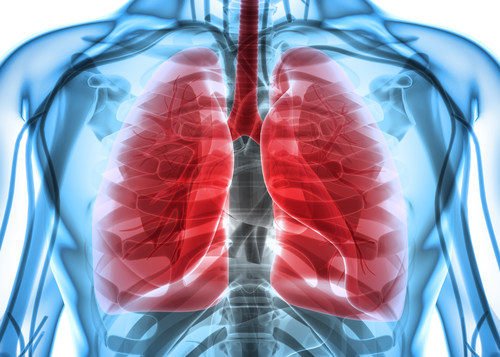Hearing Loss, if there is industrial contribution, can be grounds for a workers’ compensation claim. A workers’ compensation claim, if successful, would allow the Injured Worker to claim monetary benefits, medical care, and vocational rehabilitation benefits. For Hearing Loss cases, if medically indicated, the Injured Worker would be entitled to be supplied Hearing Aids as long as they are deemed medically necessary pursuant to Labor Code Section 4600.
Hearing Loss can be caused for a variety of reasons. One of the sources is noise. Definitionally, it is called “Noise Induced Hearing Loss.” (NIHL)
This article will discuss “Noise Induced Hearing Loss”, how “Noise Induced Hearing Loss” can be work-related, what Occupations are susceptible to hearing loss, and other possible causes for industrial hearing loss.
Is there a Historical Legal Basis for Work-Related Hearing Loss?
Caselaw has supported work-related hearing loss. In Messner vs. IAC, (1962) 27 Cal. Comp. Cases 226 (writ denied) it is quoted “[w]hile the distinction between the etiological mechanics of continuous trauma and disease may be elusive in its application to a particular set of facts, there is a considerable difference in the legal consequences flowing therefrom. The Commission has long taken the position that hearing loss is an occupational disease. We do not believe that we can alter the theory to fit the facts.” [emphasis added]
How is Noise Induced Hearing Loss (NIHL) Caused?
Noise-induced hearing loss (NIHL) occurs when loud noise causes an irreversible damage of the cochlear hair cells of the inner ear. This can occur by exposure to either intermittent or continuous hazardous sounds. Hazardous noise sound levels can occur when they exceed 85 decibels.
What Type of Doctor Addresses Hearing Loss?
The field of medicine that addresses hearing loss is Otolaryngology. Doctors within the specialty focus on the ears, nose and throat. There are referred to as Otolaryngologists or also known as ENT (Ear, Nose, and Throat) Doctors.
Are There Controversies with Respect to Work-Related Hearing Loss?
Yes. There are controversies with respect to hearing loss claims. They include causation and disability.
CAUSATION
An excellent example of an analysis of causation comes from the case of Kaiser Cement vs. WCAB (1986) 51 Cal. Comp. Cases 232 (Opinion Not Published.) The doctor opining non-industrial causation went through the following analysis. Bear in mind that this is a long analysis. While the WCAB did not side with this doctor, it clearly shows the depth and the analysis that will be done when a doctor evaluates a NIHL claim.
“The audiology report submitted by Dr. Billings noted noise exposure consisting of use of rifles and 22-millimeter guns without hearing protection while applicant was in the Navy from 1942 to 1945, as well as noise exposure on the job at Kaiser Cement. Dr. Billings described the occupational noise exposure at Kaiser Cement as “Mill noise about 20% of the time while employed as a laborer by Kaiser Cement from 1966 to 1968 and about 50% of the time while employed as an electrician/oiler by Kaiser Cement from 1973 to 1979. [Applicant] was also exposed to conveyor belt noise, motor noise and fan noise while employed as a cooler tender by Kaiser Cement from 1968 to 1973 and he was exposed to noise from dozers, graders, scrapers and loaders while employed as a heavy equipment operator by Kaiser Cement from 1979 to 1984. [Applicant] did not wear ear protection from 1966 to 1973 but he did wear ear plugs whenever exposed to intense noise from 1973 on. Cement mill noise, conveyor belts, motors, fans and heavy equipment such as dozers, graders, scrapers and loaders can generate noise levels that are hazardous to hearing without the use of ear protection.”
Dr. Billings further reported nonoccupational noise exposure consisting of applicant’s recreational use of shotguns, rifles and pistols approximately 15 times between 1946 and 1984. Dr. Billings further noted that presbycusis (hearing loss due to normal aging) usually begins at about 45 years of age in males. Because the applicant was 58 years of age at the time of evaluation, Dr. Billings reported presbycusis as a causative factor related to his hearing loss. Dr Billings concluded, “It is most probable that at least a portion of [applicant’s] present hearing loss was caused by all of the above factors and that his noise exposure at Kaiser Cement was the major causative factor of the noise causative factors. It is also most probable that some other unknown medical factor caused a significant portion of [applicant’s] present hearing loss. This opinion is based on the fact that [applicant’s] present hearing loss is considerably more severe than would be expected from his noise exposure and presbycusis …. [M]ost employees who are exposed to intense occupational noise all day every day during a working lifetime of 21 years without wearing ear protection will not incure a hearing loss at 1,000 Hz and lower frequencies. In addition, it is generally accepted that a noise-induced hearing loss will reach a maximum level of about 70 dB HL, regardless of the number of years of exposure. Since [applicant’s] hearing loss in both ears exceed these criteria considerably, it must be concluded that some other medical causative factor is responsible for a significant portion of [applicant’s] present hearing loss in addition to his noise exposure and presbycusis. It is recommended that [applicant’s] hearing loss due to noise exposure be calculated as being 0 dB HL at 500 and 1,000 Hz and as being the maximum noise-induced hearing loss of 70 dB HL at 2,000 and 3,000 Hz in both ears. Using these levels in the AAO method for calculating percent hearing handicap …, [applicant] would have a 15% hearing impairment of the right ear, a 15% hearing impairment of the left ear and a 15% binaural hearing handicap. Using these levels for calculation gives [applicant] the benefit of the doubt since these levels are based on 21 years of full-time exposure to intense occupational noise without wearing ear protection while [applicant] was only exposed to noise about 20% of the time from 1966 to 1968 without wearing ear protection, he was exposed to noise all of the time (including many 12 to 18 hour days) from 1968 to 1973 without wearing ear protection and although he was exposed to noise from 1973 on (including many 16 hour days from 1979 to 1984), he wore earplugs during all of his noise exposure from 1973 on and he reported that the earplugs were effective in reducing the background noise levels.””
PERMANENT DISABILITY
Hearing Loss becomes a Permanent Disability when the testing reaches a certain level. Currently, the AMA Guides for Rating Permanent Impairment, 5th Edition apply.
The following is an analysis of hearing loss that was made under the old non-AMA Permanent Disability Schedule. This case provides insight as to how a doctor will make a no Permanent Disability assessment. In Fleming vs. WCAB (1975) 40 C.C.C. 642, “Dr. Charles Lebo in his reports dated August 17, 1973 and September 24, 1974 indicated that Fleming had a minor bilateral high frequency hearing loss and that noise induced hearing losses are permanent, non-progressive, untreatable and non-disabling. Dr. Lebo also stated that the “regular use of approved ear protectors” would let Fleming continue to work in his regular occupation “without the risk of further noise-induced ear damage.””
What Types of Industries/Occupations are Subject to Hearing Loss?
There are various industries that can be subject to hearing loss claims. They include industries such as agriculture, airline, construction, law enforcement, mining, oil railroad, refining, safety, textile, and trucking. See Occupational Noise-induced Hearing Loss MH Azizi Int J Occup Environ Med Vol 1, No 3 (2010)
Further, there are occupations like Dentists, Professionals, and Trucking that are at risk of NIHL.
Besides NIHL, Are There Other Occupational Sources of Hearing Loss?
Yes. There are other Occupational Sources of Hearing Loss. Hearing Loss can be caused by ototoxicity. “Ototoxicity is, quite simply, ear poisoning (oto = ear, toxicity = poisoning), which results from exposure to drugs or chemicals that damage the inner ear or the vestibulo-cochlear nerve.” Vestibular Disorders Organization. “Many chemicals have ototoxic potential, including over-the-counter drugs, prescription medications, and environmental chemicals.” Supra.
What If I Need Legal Advice?
If you would like a free consultation concerning any workers’ compensation case, please contact the Law Offices of Edward J. Singer, a Professional Law Corporation. They have been helping people in Central and Southern California deal with their worker’s compensation cases for 28 years. Contact us today for more information. Click Here.


